Carlotta Orsenigo
Testing Human-Hand Segmentation on In-Distribution and Out-of-Distribution Data in Human-Robot Interactions Using a Deep Ensemble Model
Jan 13, 2025



Abstract:Reliable detection and segmentation of human hands are critical for enhancing safety and facilitating advanced interactions in human-robot collaboration. Current research predominantly evaluates hand segmentation under in-distribution (ID) data, which reflects the training data of deep learning (DL) models. However, this approach fails to address out-of-distribution (OOD) scenarios that often arise in real-world human-robot interactions. In this study, we present a novel approach by evaluating the performance of pre-trained DL models under both ID data and more challenging OOD scenarios. To mimic realistic industrial scenarios, we designed a diverse dataset featuring simple and cluttered backgrounds with industrial tools, varying numbers of hands (0 to 4), and hands with and without gloves. For OOD scenarios, we incorporated unique and rare conditions such as finger-crossing gestures and motion blur from fast-moving hands, addressing both epistemic and aleatoric uncertainties. To ensure multiple point of views (PoVs), we utilized both egocentric cameras, mounted on the operator's head, and static cameras to capture RGB images of human-robot interactions. This approach allowed us to account for multiple camera perspectives while also evaluating the performance of models trained on existing egocentric datasets as well as static-camera datasets. For segmentation, we used a deep ensemble model composed of UNet and RefineNet as base learners. Performance evaluation was conducted using segmentation metrics and uncertainty quantification via predictive entropy. Results revealed that models trained on industrial datasets outperformed those trained on non-industrial datasets, highlighting the importance of context-specific training. Although all models struggled with OOD scenarios, those trained on industrial datasets demonstrated significantly better generalization.
Evaluating deep learning models for fault diagnosis of a rotating machinery with epistemic and aleatoric uncertainty
Dec 25, 2024Abstract:Uncertainty-aware deep learning (DL) models recently gained attention in fault diagnosis as a way to promote the reliable detection of faults when out-of-distribution (OOD) data arise from unseen faults (epistemic uncertainty) or the presence of noise (aleatoric uncertainty). In this paper, we present the first comprehensive comparative study of state-of-the-art uncertainty-aware DL architectures for fault diagnosis in rotating machinery, where different scenarios affected by epistemic uncertainty and different types of aleatoric uncertainty are investigated. The selected architectures include sampling by dropout, Bayesian neural networks, and deep ensembles. Moreover, to distinguish between in-distribution and OOD data in the different scenarios two uncertainty thresholds, one of which is introduced in this paper, are alternatively applied. Our empirical findings offer guidance to practitioners and researchers who have to deploy real-world uncertainty-aware fault diagnosis systems. In particular, they reveal that, in the presence of epistemic uncertainty, all DL models are capable of effectively detecting, on average, a substantial portion of OOD data across all the scenarios. However, deep ensemble models show superior performance, independently of the uncertainty threshold used for discrimination. In the presence of aleatoric uncertainty, the noise level plays an important role. Specifically, low noise levels hinder the models' ability to effectively detect OOD data. Even in this case, however, deep ensemble models exhibit a milder degradation in performance, dominating the others. These achievements, combined with their shorter inference time, make deep ensemble architectures the preferred choice.
Fault Detection and Diagnosis with Imbalanced and Noisy Data: A Hybrid Framework for Rotating Machinery
Feb 09, 2022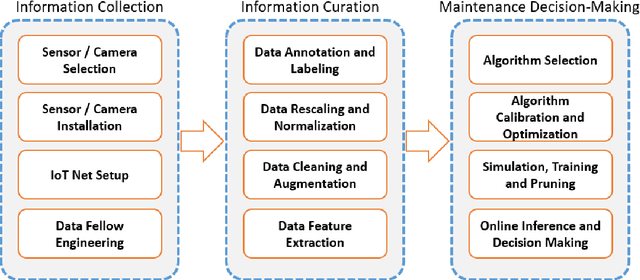
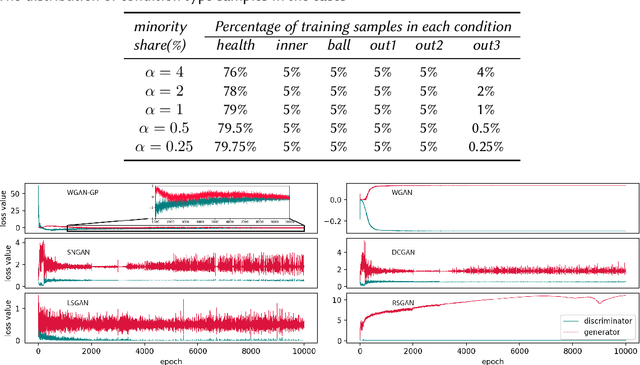
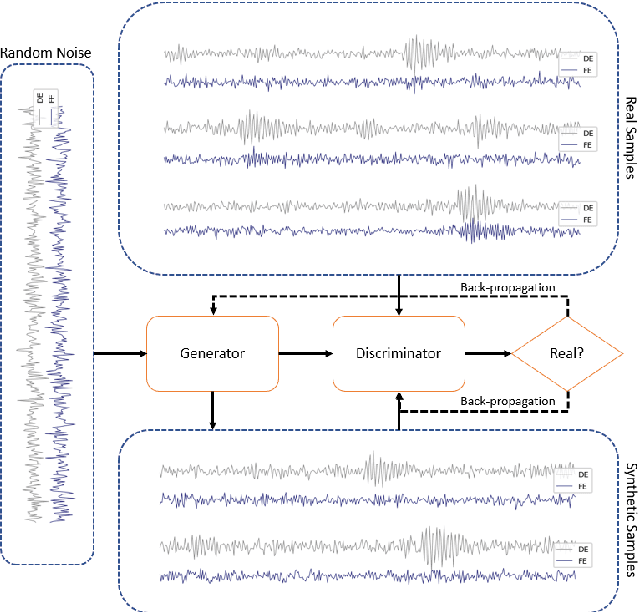
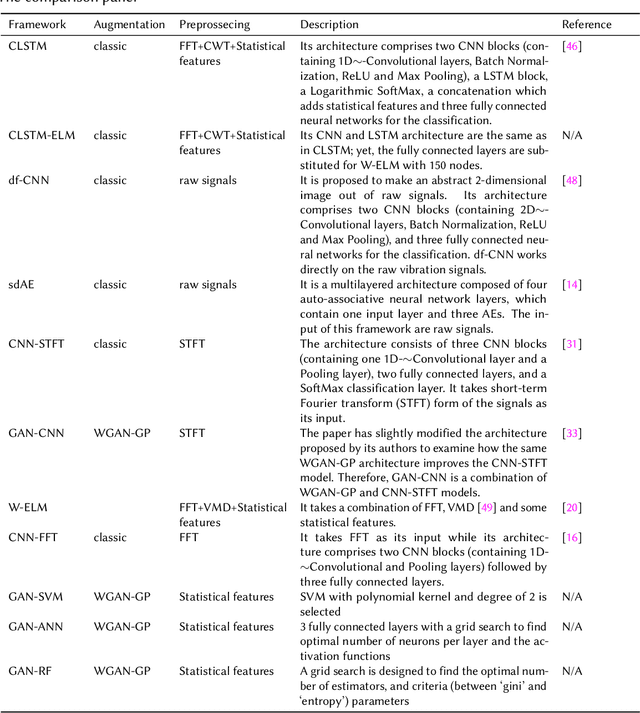
Abstract:Fault diagnosis plays an essential role in reducing the maintenance costs of rotating machinery manufacturing systems. In many real applications of fault detection and diagnosis, data tend to be imbalanced, meaning that the number of samples for some fault classes is much less than the normal data samples. At the same time, in an industrial condition, accelerometers encounter high levels of disruptive signals and the collected samples turn out to be heavily noisy. As a consequence, many traditional Fault Detection and Diagnosis (FDD) frameworks get poor classification performances when dealing with real-world circumstances. Three main solutions have been proposed in the literature to cope with this problem: (1) the implementation of generative algorithms to increase the amount of under-represented input samples, (2) the employment of a classifier being powerful to learn from imbalanced and noisy data, (3) the development of an efficient data pre-processing including feature extraction and data augmentation. This paper proposes a hybrid framework which uses the three aforementioned components to achieve an effective signal-based FDD system for imbalanced conditions. Specifically, it first extracts the fault features, using Fourier and wavelet transforms to make full use of the signals. Then, it employs Wasserstein Generative Adversarial Networks (WGAN) to generate synthetic samples to populate the rare fault class and enhance the training set. Moreover, to achieve a higher performance a novel combination of Convolutional Long Short-term Memory (CLSTM) and Weighted Extreme Learning Machine (WELM) is proposed. To verify the effectiveness of the developed framework, different datasets settings on different imbalance severities and noise degrees were used. The comparative results demonstrate that in different scenarios GAN-CLSTM-ELM outperforms the other state-of-the-art FDD frameworks.
Automatic Visual Inspection of Rare Defects: A Framework based on GP-WGAN and Enhanced Faster R-CNN
May 02, 2021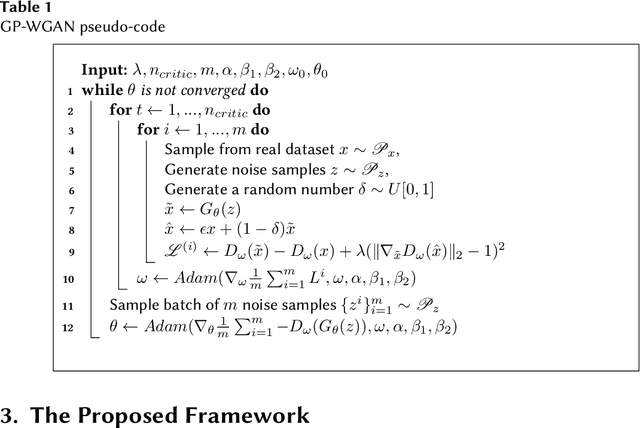
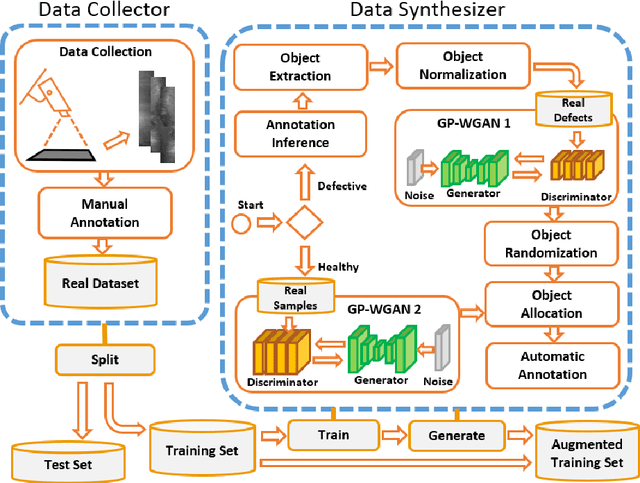
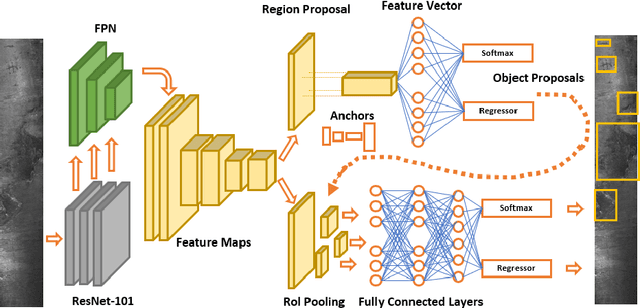
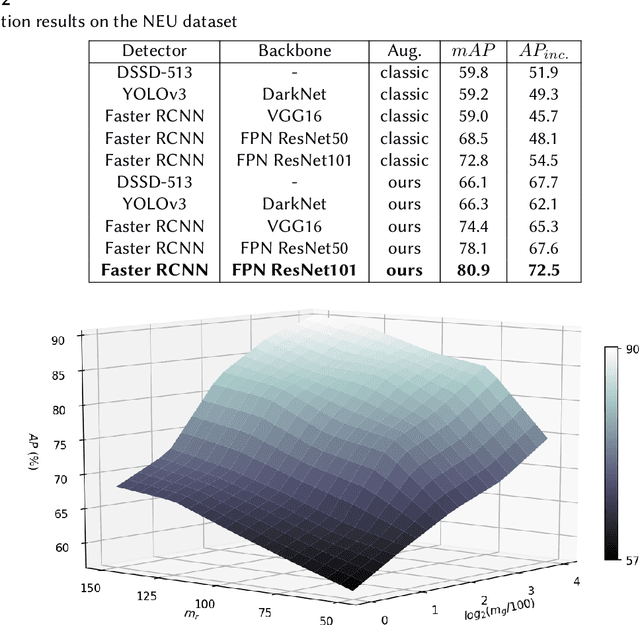
Abstract:A current trend in industries such as semiconductors and foundry is to shift their visual inspection processes to Automatic Visual Inspection (AVI) systems, to reduce their costs, mistakes, and dependency on human experts. This paper proposes a two-staged fault diagnosis framework for AVI systems. In the first stage, a generation model is designed to synthesize new samples based on real samples. The proposed augmentation algorithm extracts objects from the real samples and blends them randomly, to generate new samples and enhance the performance of the image processor. In the second stage, an improved deep learning architecture based on Faster R-CNN, Feature Pyramid Network (FPN), and a Residual Network is proposed to perform object detection on the enhanced dataset. The performance of the algorithm is validated and evaluated on two multi-class datasets. The experimental results performed over a range of imbalance severities demonstrate the superiority of the proposed framework compared to other solutions.
ELECTRAMed: a new pre-trained language representation model for biomedical NLP
Apr 19, 2021



Abstract:The overwhelming amount of biomedical scientific texts calls for the development of effective language models able to tackle a wide range of biomedical natural language processing (NLP) tasks. The most recent dominant approaches are domain-specific models, initialized with general-domain textual data and then trained on a variety of scientific corpora. However, it has been observed that for specialized domains in which large corpora exist, training a model from scratch with just in-domain knowledge may yield better results. Moreover, the increasing focus on the compute costs for pre-training recently led to the design of more efficient architectures, such as ELECTRA. In this paper, we propose a pre-trained domain-specific language model, called ELECTRAMed, suited for the biomedical field. The novel approach inherits the learning framework of the general-domain ELECTRA architecture, as well as its computational advantages. Experiments performed on benchmark datasets for several biomedical NLP tasks support the usefulness of ELECTRAMed, which sets the novel state-of-the-art result on the BC5CDR corpus for named entity recognition, and provides the best outcome in 2 over the 5 runs of the 7th BioASQ-factoid Challange for the question answering task.
 Add to Chrome
Add to Chrome Add to Firefox
Add to Firefox Add to Edge
Add to Edge